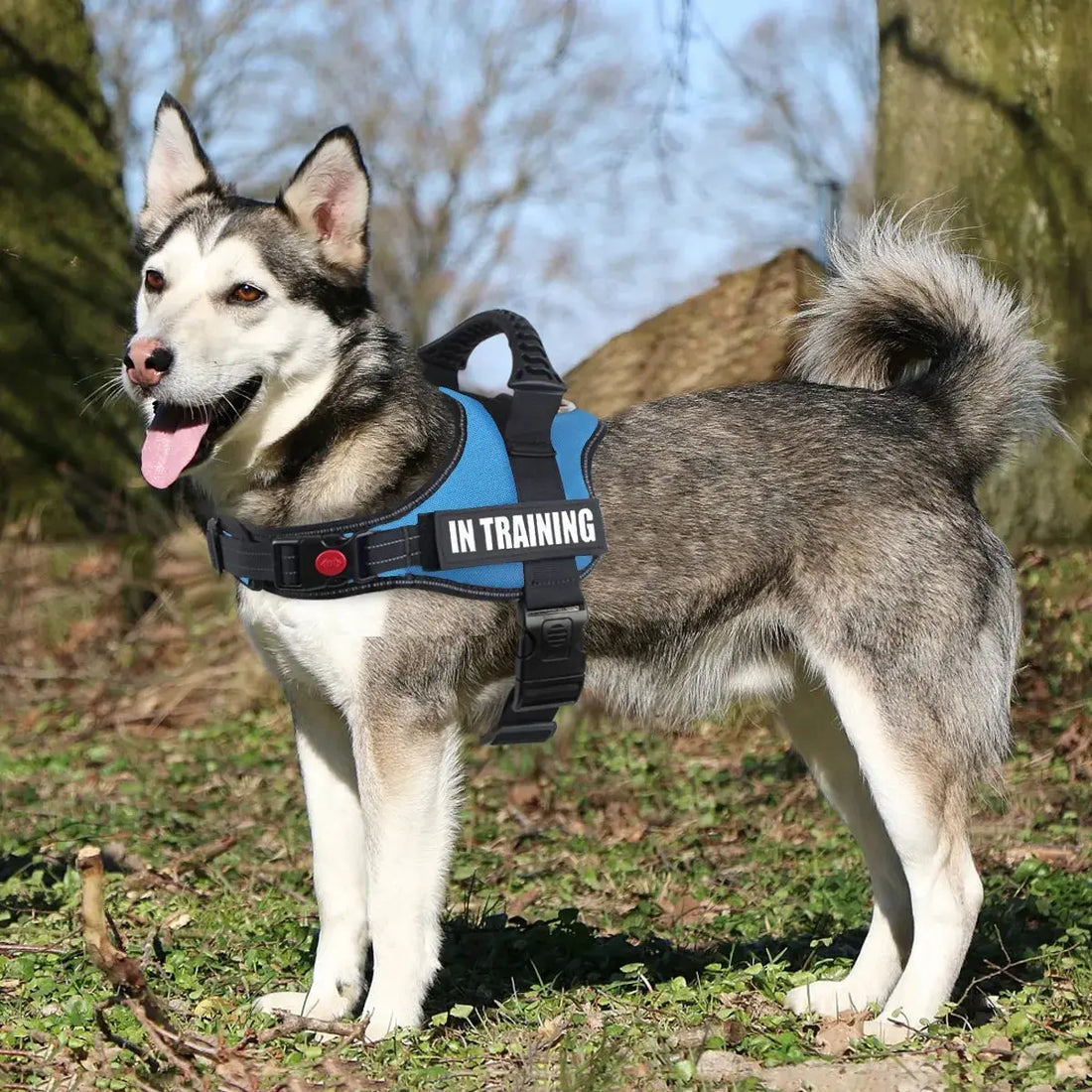
Tips for Choosing the Right Dog Harness for Your Bigger Sized Dog
A Comprehensive Guide
Choosing the right harness for your bigger-sized dog can be a challenging but essential task. A well-fitted harness not only ensures comfort and safety for your furry friend but also makes your walks more enjoyable. Here are some tips to help you make the right choice:
1. Prioritize Comfort
When selecting a harness for your larger dog, comfort should be your primary concern. Look for harnesses made from soft, breathable materials that won’t chafe or irritate your dog’s skin. Padding in critical areas such as the chest and under the legs can provide extra comfort.
2. Ensure Proper Fit
A poorly fitted harness can cause discomfort and even injury. Measure your dog’s girth (around the widest part of their chest) and neck circumference to ensure a snug yet comfortable fit. Adjustable straps allow you to tweak the fit as needed.
3. Choose the Right Type of Harness
There are several types of harnesses available, and the right one depends on your dog’s needs and behavior:
Front-Clip Harness
Ideal for dogs that pull, these harnesses have a leash attachment point on the chest, which helps redirect their attention towards you.
Back-Clip Harness
These harnesses have a leash attachment point on the dog’s back and are suited for well-trained dogs that don’t pull.
Dual-Clip Harness
Featuring leash attachment points on both the chest and back, these versatile harnesses offer more control and flexibility.
4. Consider Durability
Bigger dogs can be quite strong, so durability is a key factor. Look for harnesses made from high-quality, sturdy materials with reinforced stitching. Metal hardware, such as buckles and leash rings, is generally more durable than plastic.
5. Safety Features
Safety is paramount. Reflective strips or stitching can make your dog more visible during nighttime walks. Additionally, a handle on the back of the harness can provide extra control in tricky situations.
6. Ease of Use
A harness that is easy to put on and take off can save you time and hassle. Look for designs with quick-release buckles and minimal adjustments needed. Step-in harnesses are often easier to use than those that slip over the head.
7. Check for Mobility
Ensure that the harness allows for a full range of motion without restricting your dog’s movements. They should be able to run, jump, and play comfortably while wearing the harness.
8. Read Reviews and Recommendations
Before making a purchase, read reviews from other dog owners to get an idea of the harness’s performance and durability. Recommendations from friends or your veterinarian can also be valuable.
9. Test Before You Buy
If possible, try the harness on your dog before buying it. Many pet stores allow you to bring your dog in to try on different harnesses. This can help you ensure the right fit and comfort.
10. Budget Considerations
While it’s tempting to go for the cheapest option, investing in a high-quality harness can save you money in the long run by avoiding replacements. Balance your budget with the features and durability you need.
11. Monitor for Wear and Tear
Regularly check the harness for signs of wear and tear, such as frayed straps or damaged buckles. Replace the harness if it shows significant wear to maintain your dog’s safety.
Conclusion
Choosing the right harness for your bigger-sized dog involves considering comfort, fit, type, durability, safety, and ease of use. By taking the time to find the perfect harness, you can ensure that your dog is comfortable and secure, making your walks more enjoyable for both of you. Remember to regularly check the harness for wear and tear and be open to trying different styles until you find the best fit for your furry friend.








No comments